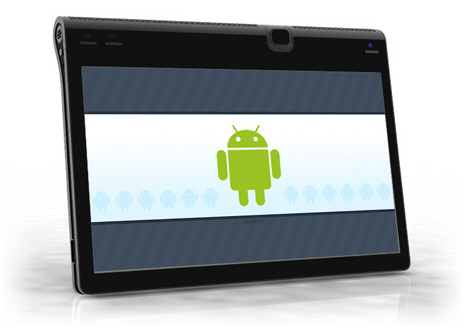How to build the perfect Android tablet, part 2: A touch of class


#2: Capacitive touch screen with smooth 10+ finger multi-touch
Recently I had the distinct displeasure of trying out an el-cheapo Android tablet from Augen that came with a resistive screen and, of all things, a stylus. Don't let anybody fool you. Resistive screens are bad. Very bad. I'm serious about this. I don't care how cheap they are -- you should avoid them at all costs. Do. Not. Buy.
Now that that's out of the way, let's talk about multi-touch. For the first couple of years of Android history, Android phones were single-touch. Point, tap, drag, and that was about it. iPhones supported multi-touch gestures like pinch zoom, and Android fans suffered the indignity of having the competition do something better than their baby. Well, at least Android had cut-n-paste, so there.
About the time iPhone finally got cut-n-paste, Android got multi-touch. Sort of. Unfortunately the first implementation on the Nexus One was pretty bad. Aside from jerky low-res registration of finger movements, it often got the coordinates of tracked fingers confused. Partly this was because of limited digitizer hardware used by HTC, and partly this was because of, ahem, idiosyncrasies in the software stack. You can read more about it in my multi-touch series and in various discussion groups and bug reports.
Anyhoo, newer phones, especially the Droid Sholes and successors from Motorola, included a better digitizer that fixed some, but not all, of the problems. Still, a fundamental issue remains: At its best, all Android devices on the market as I write this are limited to only tracking 2 fingers at once.
So sure, you can do pinch and zoom but you can forget about 3 finger swipes and more elaborate gestures that people have thought up. More importantly, only having 2 fingers rules out a whole class of applications like guitar and piano applications, synth controllers, chorded keyboards, and games that two or more people can play. Especially, say, on a larger screen, like a tablet.
A tablet practically begs for lots of fingers to touch it. I own an iPad, and one of my favorite programs there is called Magic Piano by Sonic Mule. I can use all 10 fingers at once to play any music that I could play on a real piano. Unfortunately, I can't play a duet with a friend on the same iPad because it maxes out at 10 or 11 fingers. Any more than that, and the touch screen simply doesn't register the touches.
Are you hearing this, HTC, Motorola, and Notion Ink? Paying attention, Asus and Samsung? To make the perfect tablet, please bring on that silky smooth capacitive goodness with support for *at least* 10 fingers caressing the screen at once, starting at the hardware level and going all the way through the Android software stack. And if you can, make it better than the iPad by supporting more than 10 fingers at once. My fledgling musical career depends on it.
See all the articles in the "Perfect Android Tablet" series:
What would you build into *your* perfect Android tablet? Share your thoughts in the comment area below. And check back next week to find out what's next on my list.